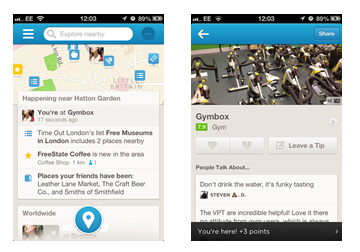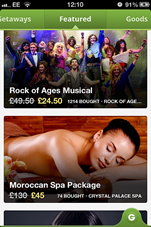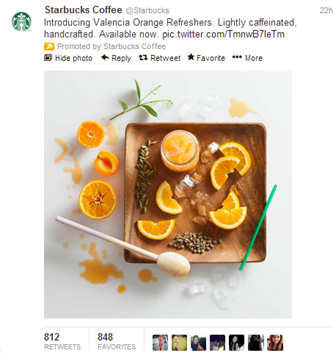Econsultancy recently published an article claiming that consumers doubt the value of personalisation and although 94% of companies agree that personalisation ‘is critical to current and future success’ less than half of companies are personalising their website experience.
This isn’t because they think personalisation is unimportant, but because they don’t actually know how to make the most of it. But even the smallest of companies can use personalised content to target their consumers directly.
We all know that everyone’s different – not one of us likes the same food, music, weather etc. so why would brands defy this common knowledge and presume they can treat us all the same?
Everyone prefers personalised cards and gifts because it shows that the giver has put in the effort when making the choice. The same can be applied to marketing – make your consumer feel like an individual, rather than just another shopper.
So how is this done?
Buying presents for our friends and family is easy because we know them well. To all intents and purposes companies and brands want to ‘be your friends’ as well – they want to know the most intimate details about you so that they can market their products more successfully.
Data is crucial for personalising content, but even if a company hasn’t collected that much, there is plenty freely available online, particularly on social media where people bare their souls.
If done well, content personalisation can help to build a trusted relationship with your customers, as they learn to expect relevant offers and information, which improves their overall satisfaction and helps to retain customer loyalty.
Google personalise search results based on a person’s previous browsing history and activity, so two people searching for the same thing may see different results because of the personalised algorithm, especially if they are signed into Google Chrome.
Classified advertising can also be personalised so that householders searching for a plumber, builder etc. will be targeted with adverts for companies that are located nearby. Obviously this makes sense – who wants to see adverts for plumbers in St Ives if you live in Dunfermline?
Google has also recently updated its maps tool, offering enhanced personalisation for users. If you are logged into Google, the tool will gradually learn your preferences to predict behavioural patterns (e.g. where you live and work) and suggest places of interest to you. It also links your reviews to Google Plus so that if your friends are searching for somewhere to go, they’ll see your recommendations.
So, the more that you use the new Google Maps tool, the more useful and personalised it becomes.
Foursquare
More than 60% of UK adults now have a smartphone, which means that our movements are easily tracked, especially if we ‘check in’ on Facebook, Foursquare etc. to show our friends where we are and what exciting we’re up to that day.
By promoting our whereabouts online, we are allowing companies to target us with real-time adverts that should be relevant to what we want and where we are. This helps retailers to entice consumers into their store, as timing is key.
Each time you check in on Foursquare (which has more than 30,000 users), you receive local tips and recommendations for where to eat, what to do etc. helping local businesses promote themselves to consumers nearby. You can also see where your friends have been, which exists as another form of recommendation.

Groupon
Personalised online promotions are also effective at driving people offline, particularly with mobile coupons offered by sites such as Groupon. In fact, 45% of Groupon’s sales are made on a mobile device as users can redeem offers at point of sale using their mobile.
So if a shopper decides to take a break for lunch and is looking for somewhere to eat, local restaurants could target them with lunchtime offers to try and entice them inside.
As daily deal sites often include a significant discount on an expensive product or service and only last for a limited time, they are more attractive to consumers who tend to impulse buy, especially if the deal is nearby.
 Twitter
Twitter
Twitter already offers promoted tweets based on user location and according to eMarketer, almost 25% of users have seen promoted tweets from companies that are relevant to them.
Twitter is now trialling advertising based on keywords as well, enabling businesses to target users who tweet certain words in real-time.
So Starbucks could bid on the keywords ‘tired’ and ‘coffee’ and if someone tweets ‘So tired this morning – really need a coffee. #HateMondays’, Starbucks could run a promoted tweet for that user offering a discount in the closest Starbucks.
However, there are also plans to run a negative sentiment filter so that a tweet saying ‘Drunk too much coffee and I’m still tired. #Bedtime’ would not see the promoted tweet.

Personalised content is king
Personalising content for online customers should make them pay more attention to your products and engage with your brand. Keeping content relevant should be a priority for all businesses, who should aim to directly target their customers, either individually or in segments.
This can be as simple as using a customer’s name at the top of an email. Once you have captured data, it becomes much easier to target product content towards your existing customers using marketing technologies. Retailers can target their customers directly using data feeds
In fact, it is making it almost too easy to target people wherever they are, to the extent that soon we will be informed of the offers available in each store or restaurant in real-time as we walk down the high street, whether we want to or not!
About Marta Xufre





